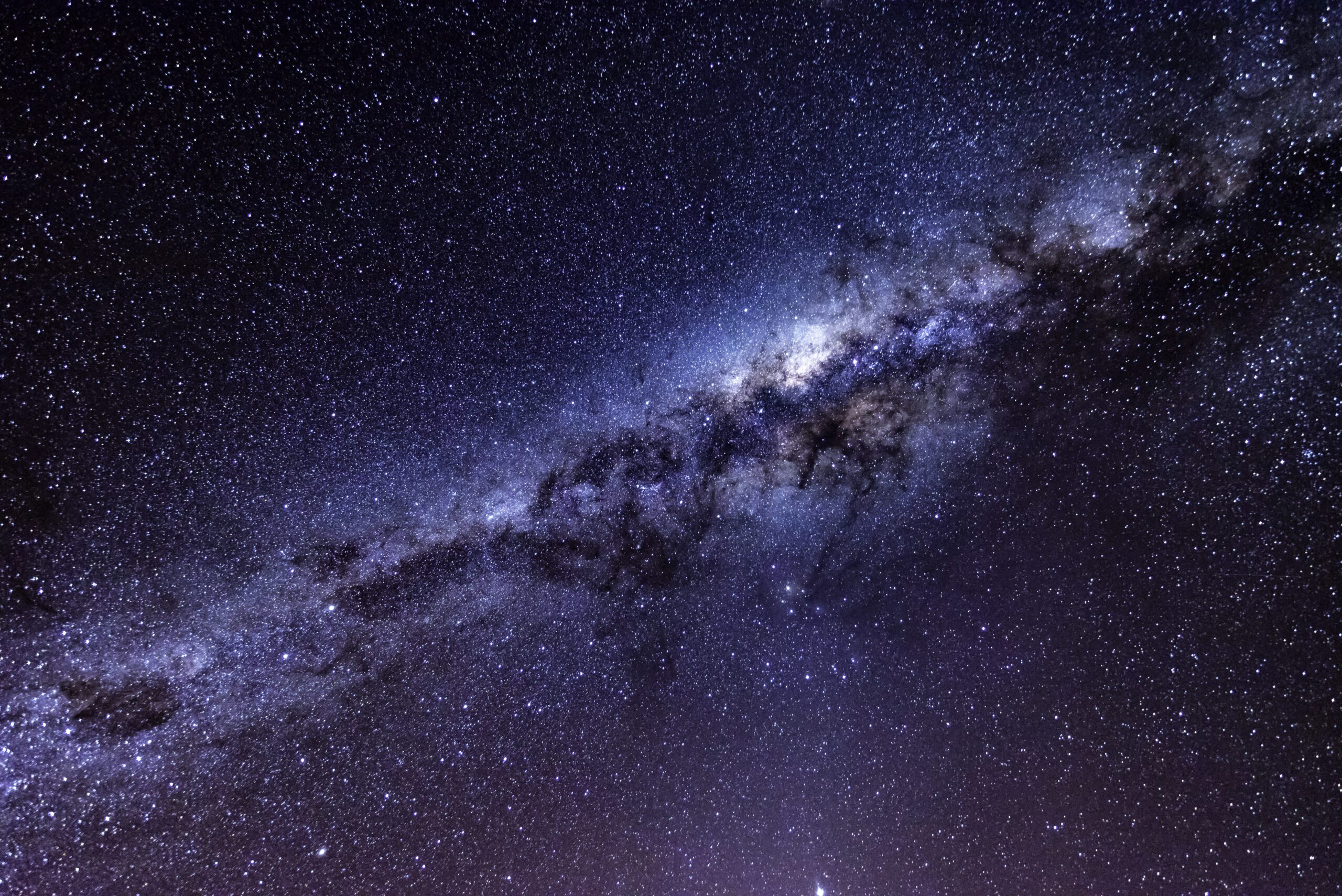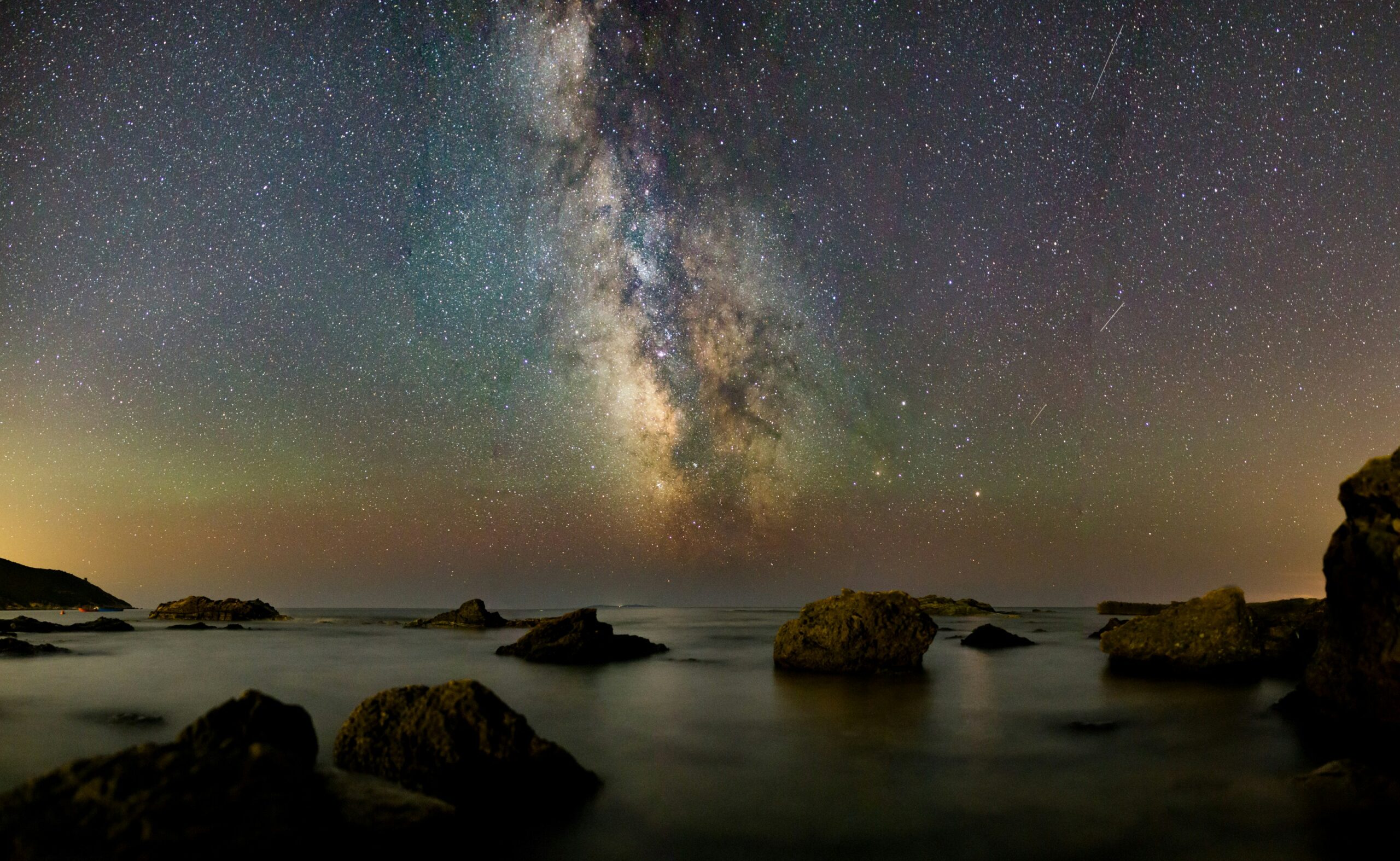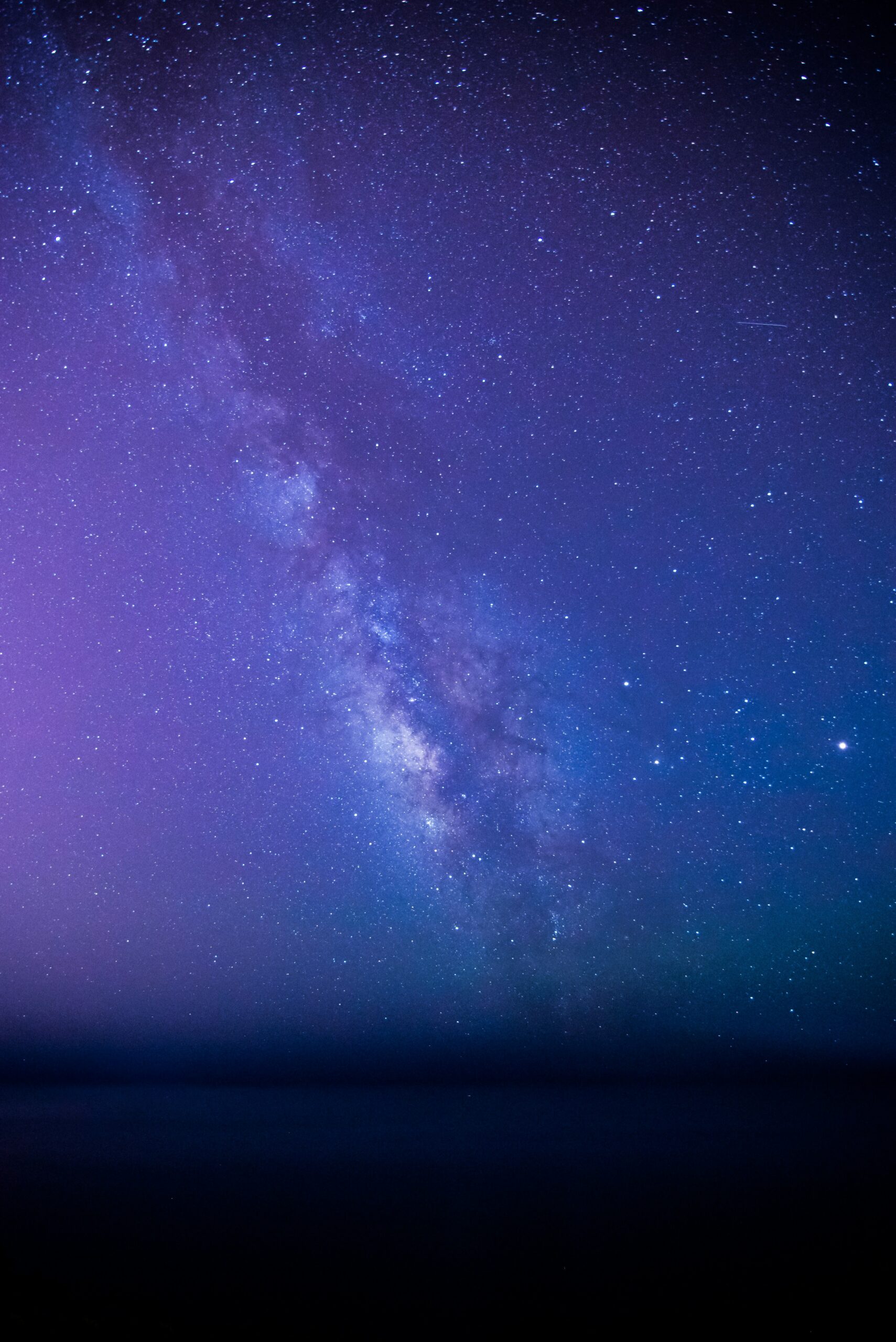You may be surprised to learn that yes, you can indeed see a galaxy with binoculars! While telescopes are commonly associated with stargazing, binoculars can provide a unique and accessible way to explore our vast universe. With their wider field of view, binoculars allow you to take in a broader perspective of the night sky and reveal distant galaxies that may otherwise go unnoticed. So, grab your binoculars and prepare for a mesmerizing journey through the cosmos, where galaxies await to be discovered.

Understanding Light and Optics
The role of light in viewing celestial bodies
Light plays a crucial role in our ability to observe and appreciate celestial bodies such as galaxies. When we look up at the night sky, we are essentially capturing and interpreting the light that travels from these distant objects to our eyes. It is through the collection and processing of light that we are able to perceive the magnificence of the universe.
How binoculars work: Focusing and amplifying light
Binoculars are optical instruments that have the power to enhance our vision of the celestial wonders. They work on the principles of optics, which involve the manipulation of light to form an image. Binoculars consist of two telescopes mounted side by side, allowing us to view objects with both eyes simultaneously. By focusing and amplifying the light that enters the lenses, binoculars enable us to observe celestial bodies with greater clarity and detail.
Significance of optic clarity and magnification
Optical clarity and magnification are two crucial factors to consider when choosing binoculars for stargazing. Optic clarity refers to the ability of the lenses to transmit light without distortion or aberration. This clarity ensures that the image formed in the binoculars remains sharp and true to what is being observed. Magnification, on the other hand, determines the apparent size of the object being viewed. A higher magnification allows us to see distant celestial objects with greater detail, while a lower magnification provides a wider field of view. Finding the right balance between clarity and magnification is key to a rewarding stargazing experience.
Understanding Galaxies
The size, structure, and nature of galaxies
Galaxies are vast systems of stars, gas, and dust held together by gravity. They come in various shapes and sizes, ranging from spiral galaxies like our own Milky Way to elliptical and irregular galaxies. The structure of galaxies consists of a central bulge surrounded by arms, disks, or other distinctive features. These celestial bodies contain billions to trillions of stars, and they are often accompanied by other celestial objects such as nebulae and globular clusters. The study of galaxies has provided valuable insights into the evolution and composition of our universe.
How far away are average galaxies
The vastness of the universe becomes evident when we consider the distances between galaxies. On average, galaxies are located millions to billions of light-years away from Earth. A light-year, which measures the distance light travels in one year, is approximately 5.88 trillion miles (9.46 trillion kilometers). This immense scale makes it challenging to observe galaxies directly with the naked eye, but binoculars can help bridge the gap and allow us to catch a glimpse of these distant marvels.
The brightness and visibility of galaxies from Earth
The brightness and visibility of galaxies from Earth vary depending on several factors. The size, distance, and composition of each galaxy influence how easily it can be seen. Some galaxies, like the Andromeda Galaxy, are relatively bright and can be spotted with binoculars from a dark location. Others, such as the Triangulum Galaxy, may require darker skies and larger binoculars to observe. Additionally, light pollution from populated areas can diminish the visibility of galaxies, making it essential to find a suitable stargazing location away from bright city lights.
The Milky Way: Our Home Galaxy
Understanding the structure and brightness of the Milky Way
The Milky Way is our home galaxy, a vast spiral system of stars, gas, and dust. From our perspective on Earth, it appears as a band of light spanning the night sky. The Milky Way consists of a bright central bulge surrounded by spiral arms. The structure of our galaxy is a wonder to behold, and binoculars can help us appreciate its intricacies. By observing the Milky Way through binoculars, we can see individual stars, clusters, and faint nebulae that contribute to its brilliance.
How parts of the Milky Way can be observed with the naked eye
While binoculars enhance our view of the Milky Way, there are certain parts of our galaxy that can be observed with the naked eye alone. On clear, moonless nights, away from light pollution, we can observe the band of the Milky Way stretching across the sky. The dark regions within the Milky Way, known as dust lanes, create a captivating contrast against the backdrop of stars. These naked-eye views of the Milky Way offer a glimpse into the vastness and beauty of our galactic home.
The visibility of the Milky Way under different conditions
The visibility of the Milky Way can be affected by various environmental factors. Light pollution is one of the primary challenges to observing the Milky Way from populated areas. Artificial lights create a veil of brightness that obscures the fainter stars and structures of our galaxy. However, in remote locations with minimal light pollution, the Milky Way can be a breathtaking sight. Clear skies, away from clouds and atmospheric disturbances, also enhance the visibility of our galactic neighbor.
Choosing the Right Binoculars
Importance of magnification power
When selecting binoculars for stargazing, magnification power is a crucial consideration. Higher magnification enables us to see celestial objects in greater detail, allowing us to observe features that would otherwise remain unseen. However, higher magnification also results in a narrower field of view, making it more challenging to locate and track objects. Therefore, it is essential to strike a balance between magnification and field of view, considering the type of observations one intends to make.
The role of lens diameter in gathering light
The diameter of the lenses, often referred to as the aperture, is another vital factor in choosing binoculars. A larger lens diameter allows for the gathering of more light, resulting in brighter and clearer images. This increased light-gathering ability is particularly important when observing faint celestial objects such as galaxies. However, larger lenses also result in bulkier and heavier binoculars, which may impact portability and user comfort. Therefore, finding the right balance between lens diameter and practicality is essential.
How to choose a well-designed pair for stargazing
To choose a well-designed pair of binoculars for stargazing, one must consider a combination of factors beyond magnification and lens diameter. Factors such as optical quality, field of view, and ergonomics also play significant roles. It is important to research and read reviews to find binoculars that offer excellent optical performance, a wide field of view, and comfortable handling. Additionally, considering factors like waterproofing, durability, and ease of focus adjustment can help ensure a satisfying stargazing experience for years to come.

Setting Up Your Viewing Environment
The role of ambient light in astronomical observation
Ambient light, including both natural and artificial sources, can greatly impact astronomical observations. Excessive ambient light, such as streetlights or neighboring buildings, can create a phenomenon known as light pollution. This pollution reduces contrast and makes it difficult to observe faint celestial objects. To optimize stargazing, it is crucial to choose a location with minimal ambient light and ideally away from urban or heavily populated areas.
How to choose a good stargazing location
Choosing a good stargazing location involves finding an area with minimal light pollution and a clear view of the night sky. Rural areas, national parks, or designated dark sky reserves are often excellent choices for stargazing enthusiasts. In these locations, the absence of artificial lights creates a wealth of celestial wonders to explore. Accessibility, safety, and comfort should also be considered when selecting a stargazing site. Ensure the chosen location allows for a wide field of view and is protected from excessive winds or other potential hazards.
Understanding atmospheric conditions and their effect on visibility
Atmospheric conditions can greatly influence the visibility of celestial objects. Factors such as air pollution, humidity, and atmospheric turbulence can impact the clarity and sharpness of the observed image. In areas with poor air quality, the image may appear hazy or less defined. Similarly, high humidity levels can create a veiling glare that reduces contrast. To maximize visibility, it is advisable to choose nights with stable atmospheric conditions, preferably after rain showers when the air is typically clearer and cleaner.
Techniques for Spotting Galaxies
How to find a galaxy in the night sky
Spotting a galaxy in the night sky requires careful observation and a basic understanding of the celestial coordinates. Using star charts or smartphone apps, one can locate the general region where a galaxy is located. From there, it becomes a matter of scanning the sky systematically to identify the faint haze or concentration of stars that distinguishes a galaxy from other celestial objects. By following guides and using reference points, even beginner stargazers can learn to identify and appreciate these cosmic wonders.
Using star charts and modern apps for location
Star charts and modern smartphone apps have revolutionized the way we navigate and identify celestial objects in the night sky. Star charts, either in print or digital format, provide detailed maps of the sky, indicating the positions of stars, constellations, and notable objects like galaxies. Smartphone apps leverage the built-in GPS and augmented reality technologies to offer real-time tracking and identification of celestial bodies. These invaluable tools greatly assist stargazers in locating and understanding the positions of galaxies and other fascinating objects.
Tips for patience and perseverance
Spotting galaxies requires patience and perseverance. Our target objects may appear as faint smudges of light amidst a sea of stars. It may take time and careful observation to distinguish them from other celestial features. Stargazing is a journey of exploration, and embracing the process of patiently scanning the night sky can lead to a newfound appreciation for the wonders of the universe. When embarking on a quest to find galaxies, it is essential to cultivate a sense of curiosity, wonder, and perseverance.

Galaxies You Can See With Binoculars
The Andromeda Galaxy: Our closest neighbor
The Andromeda Galaxy, also known as M31, is one of the most prominent and easily observable galaxies from Earth. Located approximately 2.5 million light-years away, it is our closest massive galactic neighbor. With its distinct spiral structure and vast expanse, the Andromeda Galaxy offers a captivating sight when seen through binoculars. Even though it appears as a fuzzy patch of light, the ability to witness another galaxy at such a vast distance is a humbling experience that brings us closer to understanding the grandeur of the cosmos.
The Triangulum Galaxy: A faint challenge
The Triangulum Galaxy, or M33, presents a more challenging target for binocular observation. This spiral galaxy is located approximately 3 million light-years away, making it slightly farther than the Andromeda Galaxy. Due to its distance, the Triangulum Galaxy appears dimmer and requires darker skies with minimal light pollution to be visible through binoculars. Despite its relative faintness, the Triangulum Galaxy rewards those who patiently search for its delicate glow, providing a sense of accomplishment and the opportunity to witness another cosmic wonder.
The Whirlpool Galaxy: A distant spectacle
The Whirlpool Galaxy, also known as M51, is a remarkable pair of interacting galaxies that showcases the dynamic nature of the universe. Located approximately 23 million light-years away, this stunning cosmic spectacle presents a more challenging observation target for binoculars. The Whirlpool Galaxy requires moderate to large-sized binoculars and considerably dark skies to reveal its spiral structure and the faint companion galaxy. Despite its distance, the Whirlpool Galaxy’s intricate dance of stars and gas invites us to ponder the vastness and beauty of the cosmos.
Enhancing Your Observations
Using additional equipment such as tripods and star charts
To enhance our observations of galaxies, additional equipment can prove invaluable. Tripods provide stability and eliminate hand tremors, allowing for more prolonged and comfortable viewing sessions. By attaching binoculars to a tripod, we can achieve a steady image, especially at higher magnifications. Star charts or smartphone apps help us navigate the night sky and identify specific galaxies, adding an educational and informative dimension to our observations. These tools, when used in conjunction with binoculars, deepen our understanding and appreciation of the galaxies we observe.
The role of astrophotography in capturing galaxy views
Astrophotography offers a unique and immersive way to capture the beauty and grandeur of galaxies. By using specialized cameras or adapting traditional cameras, astrophotographers can capture detailed images of galaxies that reveal intricate structures and delicate features. Astrophotography requires additional equipment such as camera adapters, mounts, and tracking systems to compensate for Earth’s rotation. With skill and dedication, astrophotographers can produce stunning images that showcase the awe-inspiring nature of galaxies, allowing us to share in their wonder and inspire future explorations.
Safety Precautions
Avoiding unnecessary light exposure to the eyes
When engaging in stargazing, it is crucial to protect our eyes from unnecessary light exposure. The prolonged exposure to bright light sources, such as spotlights or flashlights, can impair our night vision, making it more challenging to observe faint celestial objects. It is recommended to use red LED flashlights, which preserve our night vision while providing enough illumination for reading star charts or adjusting equipment. Additionally, avoiding direct glances at bright sources like the Moon or planets reduces the risk of temporary visual impairment.
Stargazing safely: Importance of comfortable seating and warm clothing
Ensuring a comfortable and safe stargazing experience involves taking care of our physical well-being. Sitting or lying on uncomfortable surfaces for prolonged periods can lead to discomfort and distraction. Using a comfortable reclining chair or a soft mat can greatly enhance our enjoyment and allow us to focus on the wonders of the night sky. Furthermore, stargazing often means being exposed to cooler nighttime temperatures. Dressing warmly and layering clothing helps retain body heat, ensuring comfort and prolonging our ability to observe the celestial splendor without discomfort.
The Limitations of Binoculars
Understanding the limits of binocular magnification
Binoculars, while powerful tools, have their limits when it comes to magnification. Higher magnification results in a narrower field of view, making it challenging to locate and track objects. It can also exaggerate hand tremors and other small movements, leading to a shaky image. Therefore, binoculars typically have lower magnifications compared to telescopes. While they allow us to observe galaxies and other celestial objects, they may not provide the same level of detail and clarity as a telescope with specialized eyepieces.
How the Earth’s atmosphere can distort images
The Earth’s atmosphere poses a challenge to observational astronomy due to its effect on the light passing through it. Atmospheric turbulence, caused by factors such as temperature variations and air currents, can distort and blur the image formed by binoculars. This phenomenon, known as “seeing,” limits the level of detail that can be resolved. The quality of seeing is highly variable and depends on factors like altitude, weather conditions, and the proximity of the observation site to a large body of water or urban areas. While not exclusive to binocular observations, the Earth’s atmosphere adds a layer of complexity that must be considered.
Why telescopes might be a better option for more detailed viewing
For those seeking more detailed views of galaxies and other celestial objects, telescopes are often a better option than binoculars. Telescopes are specially designed to gather and focus light, allowing for higher levels of magnification and resolving power. They often have larger apertures, which provide better light-gathering abilities and result in clearer and more detailed images. Telescopes also allow for the use of specialized eyepieces and image-enhancing filters, further enhancing the observing experience. While telescopes may require more knowledge and skill to operate effectively, they offer a higher level of detail and precision for those passionate about delving into the mysteries of the universe.
